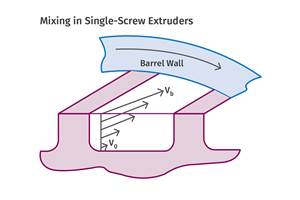Dynisco Extends Machinery Directive Compliance to 4-20mA Pressure Sensors
Billed as 'ideal choice. for extrusion OEMs and processors that need to comply with the European standard.
Dynisco 4-20 milliamp (mA) pressure sensors are now available with the Guardian safety relay switch so they meet the Performance Level ‘c’ (PL ‘c’) standard of the European Machinery Directive (EN ISO 13849-1). The certified safety relay also complies with U.S. standard NFPA 79 clauses A.9.2, A.9.4.1, and A.9.4.3.2. Pressure sensors with mA output are often preferred because, among other reasons, they allow for longer wire runs without process-control signal loss. However, until now, mA sensors have not been available in a Guardian configuration.
The new sensors are the ideal choice for extrusion OEMs and processors that need to comply with the European standard, or who simply want a higher level of safety in their equipment, according to the Frankin, Mass. supplier.
The key Guardian component is an internal relay safety switch. It responds to input from the pressure sensor bridge, detecting an open bridge, a loss of power to the pressure sensor or a user-selected pressure level. Upon detecting one of these faults, the relay contacts open, sending a signal to return the extruder to a safe condition. Guardian-equipped sensors serve as a safety backup, bringing the extruder into compliance without the expense and complication of redundant sensors and external relay modules.
“When we first developed this relay mechanism, we applied it immediately to our millivolt (mV) and mA-HART sensors and it's worked very well,” explains Bill Desrosiers, Dynisco's v.p., new ´óĎó´«Ă˝ development. “By extending the Guardian safety function to the 4-20mA product line, we can offer PL'c' compliance across the entire portfolio."
Along with Guardian, several other features are included:
• Rezero is now standard on all mA sensors: Also known as auto-zero, zero adjustment or remote auto-zero, rezero is a method of recalibrating the sensor by resetting the zero output at the lower end of the sensor's pressure range. Rezeroing can be accomplished both locally and remotely.
• The output on all mA sensors is Machinery Directive PL'c' compliant: The mA output signal is PL ‘c’ compliant with or without the Guardian PL'c' compliant relay option.
• The mA sensor is now rated SIL 2. Safety Integrity Level (SIL) refers to a relative level of risk-reduction provided by a safety function in an electrical circuit. The SIL2 rating of the Dynisco mA sensors can help plants achieve a higher overall safety rating, and may even lower insurance premiums.
Dynisco offers Guardian on a host of sensor outputs including mV/V, HART, and now 4-20mA.
“A pressure sensor, used in a safety function on an extruder, is one of the machine components that must comply with the latest European safety directive that became effective in 2012,” explains Mike Davis, Dynisco's dir., product management. “Compliance is required for new extruders put into service in the European Community and existing equipment being retrofitted by the manufacturer. In addition, extruder users who have a global presence and a desire to set uniform safety standards worldwide, or any company with a strong culture of safety, will want to protect their equipment and personnel by using Guardian sensors.”
Guardian sensors are self-certified based on Failure Mode Effects and Diagnostic Analysis (FMEDA) reports that show the 4-20mA sensors have been evaluated for random failure requirements and meets Performance Level 'c' (PL'c') and SIL2. The information in the FMEDA report can be used by the customer's system designer as part of the overall qualification of the device in the system for PL'c' or SIL compliance.
Related Content
NPE2024 Wrap-Up: Sustainability Dominates Show Floor News
Across all process types, sustainability was a big theme at NPE2024. But there was plenty to see in automation and artificial intelligence as well.
Read MoreHow To Identify Resin Degradation in Single-Screw Extruders
Degradation can occur in many single-screw extrusion operations, and typically occurs due to minor design flaws in the screw. Here is how to track it down.
Read MoreShredding Thin Film: How to Do It Right
While many processors recoil at this task, a little know-how in shredding equipment, processing, and maintenance should add the necessary confidence.
Read MoreSingle vs. Twin-Screw Extruders: Why Mixing is Different
There have been many attempts to provide twin-screw-like mixing in singles, but except at very limited outputs none have been adequate. The odds of future success are long due to the inherent differences in the equipment types.
Read MoreRead Next
Lead the Conversation, Change the Conversation
Coverage of single-use plastics can be both misleading and demoralizing. Here are 10 tips for changing the perception of the plastics industry at your company and in your community.
Read MoreBeyond Prototypes: 8 Ways the Plastics Industry Is Using 3D Printing
Plastics processors are finding applications for 3D printing around the plant and across the supply chain. Here are 8 examples to look for at NPE2024.
Read More









